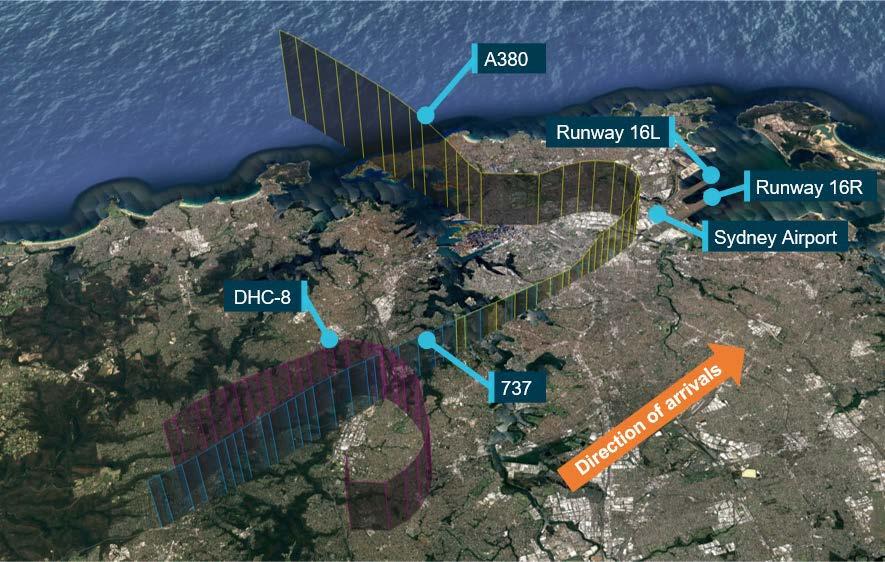
|
Key points:
|
The pilots of an Airbus A380 which turned left instead of right while conducting a missed approach to land at Sydney Airport, contrary to an air traffic control (ATC) instruction, were likely experiencing a high workload, an ATSB investigation found.
The Singapore Airlines A380 was operating a scheduled passenger service from Singapore to Sydney on 9 February 2020, with the flight crew—comprising the captain as pilot flying and the first officer as pilot not flying—having briefed before and during the flight on the forecast deteriorating weather at Sydney. Cleared for an ILS (instrument landing system) approach to Sydney Airport’s runway 16 right, the A380 encountered windershear while descending through about 1,000 feet. In response, the flight crew initiated a missed approach and advised air traffic control that they were ‘going around due to windshear’.
Air traffic control instructed the flight crew to turn right onto a heading of 270°. The first officer read back the heading, however, did not include the direction of the turn, and ATC did not correct the incomplete readback. The flight crew then commenced turning the aircraft left instead of right.
Air traffic control subsequently issued a safety alert to the A380 flight crew, advised them of a Bombardier Dash 8 (DHC-8) aircraft about 6 NM (11 km) on final for runway 16 left, and instructed them to turn right and climb immediately. Air traffic control then instructed the flight crew of the Dash 8 to make a right turn in order to maintain separation with the A380. This in turn resulted in a loss of separation between the Dash 8 and a Boeing 737, which was on approach to runway 16 right.
The minimum distance between the Dash 8 and 737 aircraft reduced to 2.6 NM (4.8 km) laterally and 1,300 feet (397 m) vertically.
“The ATSB found that the A380 flight crew were likely experiencing a high workload managing a high-energy aircraft state as a result of conducting the windshear recovery and missed approach,” said ATSB acting Director Transport Safety Kerri Hughes.
“This, in combination with an expectation that they would be turning left, contributed to the flight crew mishearing the ATC instruction to turn right.”
Ms Hughes said the incident highlights the importance of readbacks to provide assurance that air traffic control instructions are correctly understood.
“The flight crew omitted the direction of the turn from their readback, which was not corrected by ATC. This was a missed opportunity to correct the misheard instruction,” she said.
“This incident highlights the importance of flight crew completing full readbacks, as well as controllers correcting any readback discrepancies immediately.”
In response to the incident, Singapore Airlines issued a notice to flight crew, highlighting strategies to manage high workload situations, as well as reiterating the importance of correct readbacks and acknowledgement from ATC.
Read the report: Operational non-compliance involving Airbus A380, 9V-SKQ, near Sydney Airport, NSW, on 9 February 2020


